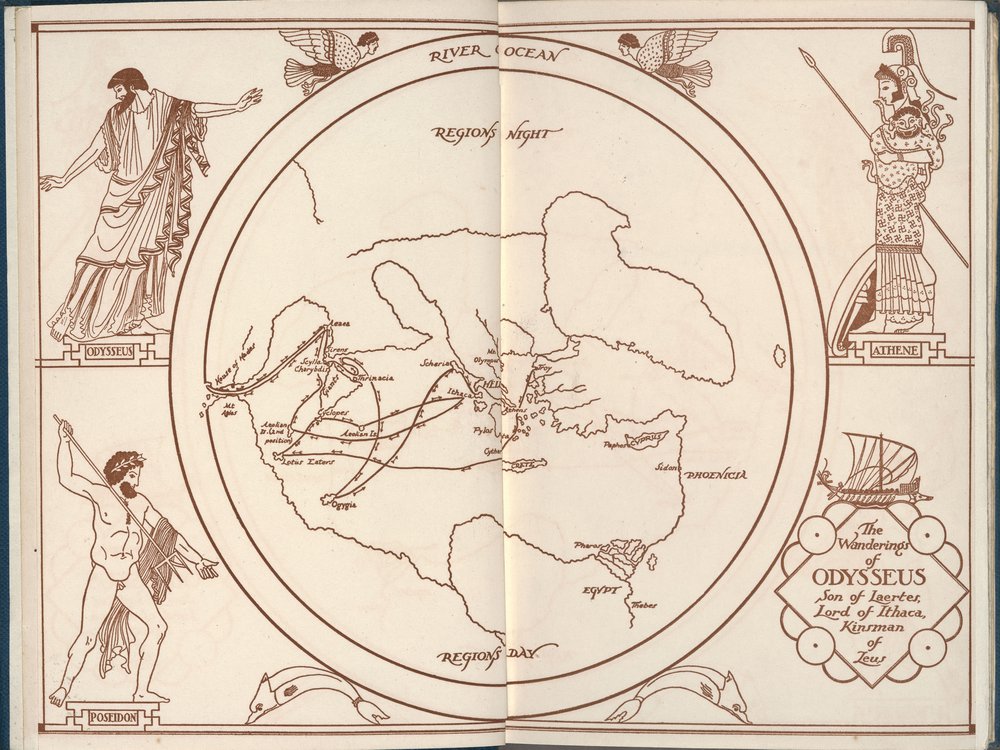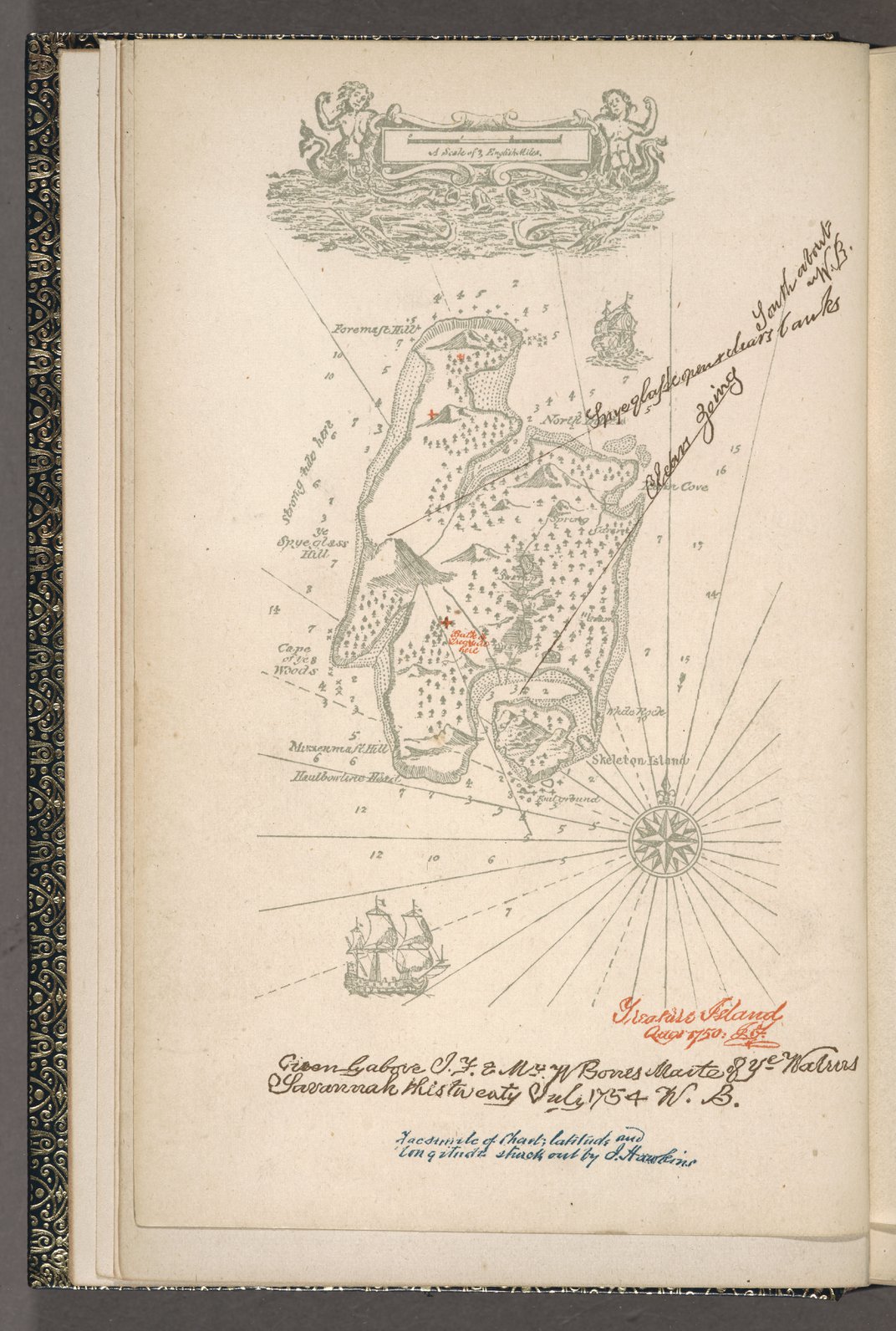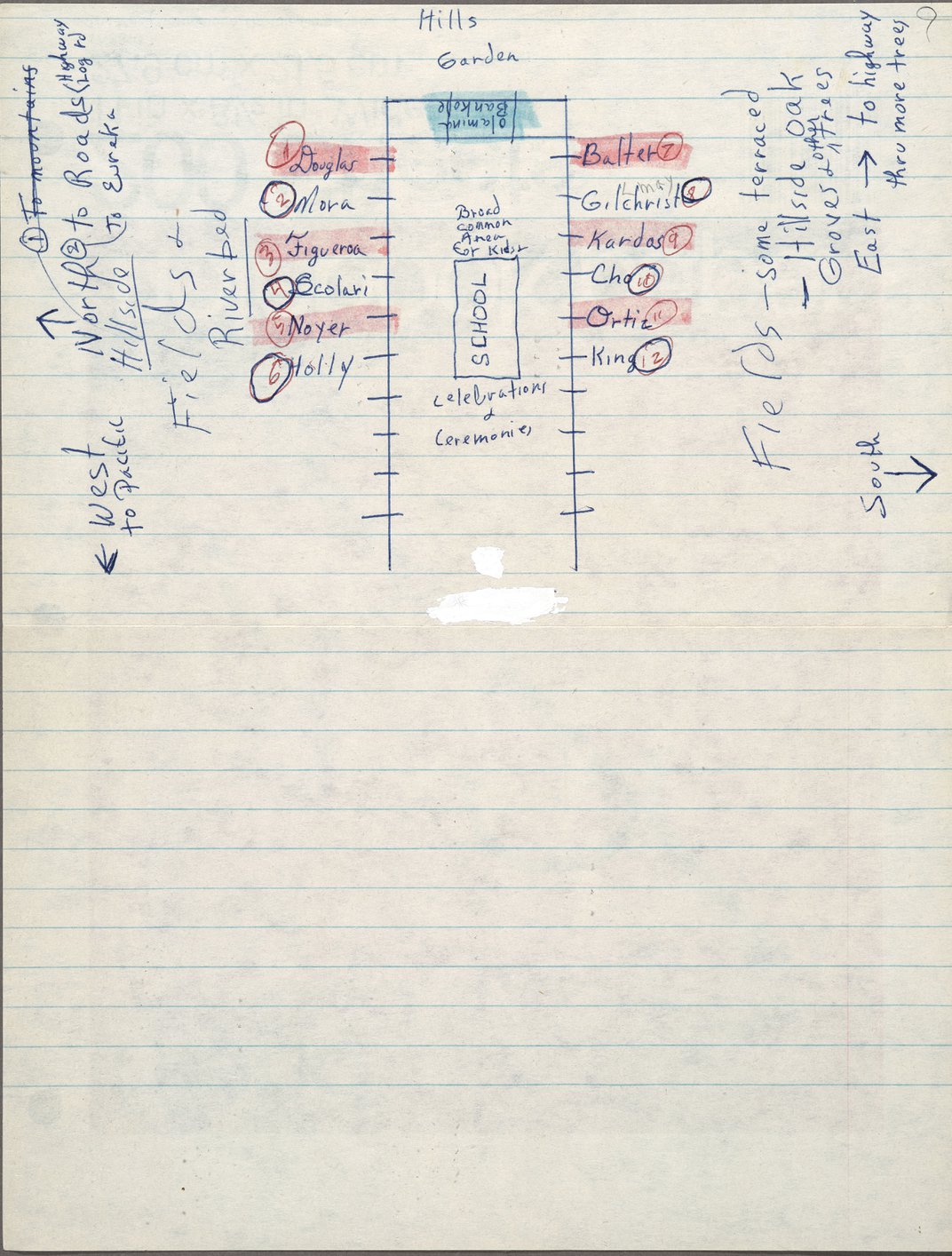
© Oxford University Press, Inc. / Reproduced with permission of the Licensor through PSLclear / Courtesy of The Huntington Library, Art Museum, and Botanical Gardens.
Maps help users orient themselves in the real world, but they can also help people escape reality. For centuries, authors have been known to include fictional maps in the pages of their novels, as a way of inviting readers to immerse themselves in imaginary worlds. Lord of the Rings author J.R.R. Tolkien, for instance, mapped the fantastical locations of Elven woods and hobbit homes throughout his imaginary Middle Earth.
Museumgoers can now explore maps from their favorite novels at the Huntington Library, Art Museum and Botanical Gardens in San Marino, California. “Mapping Fiction,” a new exhibition on display through May 22, unites about 70 works from the museum’s literary collections.
The show was planned in conjunction with the centennial celebration of James Joyce’s 1922 modernist novel Ulysses, notes Karla Nielsen, curator of literary collections at the Huntington, in the exhibition’s gallery guide. The museum will display its prized first edition of Ulysses alongside a typed first draft of its “Penelope” chapter, per a statement from the Huntington. The exhibition pairs these original artifacts with intaglio prints from Irish artist David Lilburn, who was inspired in the mid-2000s to create a series of seven “maps” of Dublin overlaid with the literary references included in the book. The prints “[depict] Dublin as it uniquely exists in Joyce’s novel,” the museum adds.
David Lilburn, “The Quays” from In medias res, 2006. Intaglio print on paper. Courtesy of The Huntington Library, Art Museum, and Botanical Gardens / © David Lilburn 2021
Other featured maps depict the settings of author Octavia E. Butler’s sprawling science fiction Parable series, 19th-century Scottish writer Robert Louis Stevenson’s Treasure Island, Renaissance Italian poet Dante Alighieri’s vision of hell and more. Elaborate maps that accompanied early editions of Tolkien’s Lord of the Rings trilogy and George R.R. Martin’s Game of Thrones book series are also on view, according to Artnet News.
Joyce’s Ulysses follows protagonist Leopold Bloom through one day in Dublin, June 16, 1904—a day now celebrated annually as Bloomsday in honor of the influential novel, reports Alysia Gray Painter for NBC Los Angeles.
The author’s avant-garde prose in Ulysses is marked by his use of stream-of-consciousness narration, his many allusions to other works of literature (such as Homer’s The Odyssey) and his ability to flit between the many perspectives of his characters. The work was considered by literary circles to be both influential and controversial at the time of its publication, as many cities and countries attempted to ban the book for its sexual content.
Nielsen says it was Joyce’s deliberate choice to not feature maps in his works that led her to think more deeply about the relationship between fictional works and maps, and how maps can affect readers’ perspectives.
Map of Treasure Island. From Robert Louis Stevenson, Treasure Island, 1883. Printed book. Courtesy of The Huntington Library, Art Museum, and Botanical Gardens
“Joyce adamantly did not want Ulysses published with a schema, a map of Dublin, any type of explanation really,” says Nielsen in the statement. “His resistance provoked me to think about how maps function when inset into a print novel. How do they influence how readers imagine the narrative?”
Robert Louis Stevenson took pains to create a plausible map to accompany his adventure novel Treasure Island, first published in 1883. When the travel writer’s first draft of a map was apparently lost by his publisher, he drew up a new one—even getting his father to forge a signature of the novel’s infamous pirate, Captain Flint. “The map was the chief part of my plot,” Stevenson later recalled.
“By including a map, Stevenson gave his readers a view from above that was not available to the kidnapped protagonist of his novel,” Nielsen writes in the gallery guide.
Octavia E. Butler, Map of Acorn from notes for Parable of the Talents, ca. 1994, manuscript on binder paper
© Octavia E. Butler / Reprinted by permission of the Octavia E. Butler Estate with Writers House, LLC acting as agent for the Estate / Courtesy of The Huntington Library, Art Museum, and Botanical Gardens.
Other highlights include early editions of Miguel de Cervantes’ The Ingenious Gentleman of Don Quixote of La Mancha and Jules Verne’s Around the World in 80 Days, displayed alongside a board game inspired by Nellie Bly, a famous journalist who traveled across the globe in 72 days using Verne’s novel as inspiration, per Artnet News. A collection of unpublished hand-drawn diagrams by Butler are also on view. The pioneering sci-fi writer used these diagrams to inform the unfinished and unpublished third Parable novel, Parable of the Trickster. The author died in 2006 and her papers were donated to the Huntington.
Recommended Videos



















![[Book Review] The Blade Itself (The First Law Trilogy) by Joe Abercrombie](https://bendthekneegot.com/wp-content/uploads/2018/01/1516047103_maxresdefault-218x150.jpg)



















